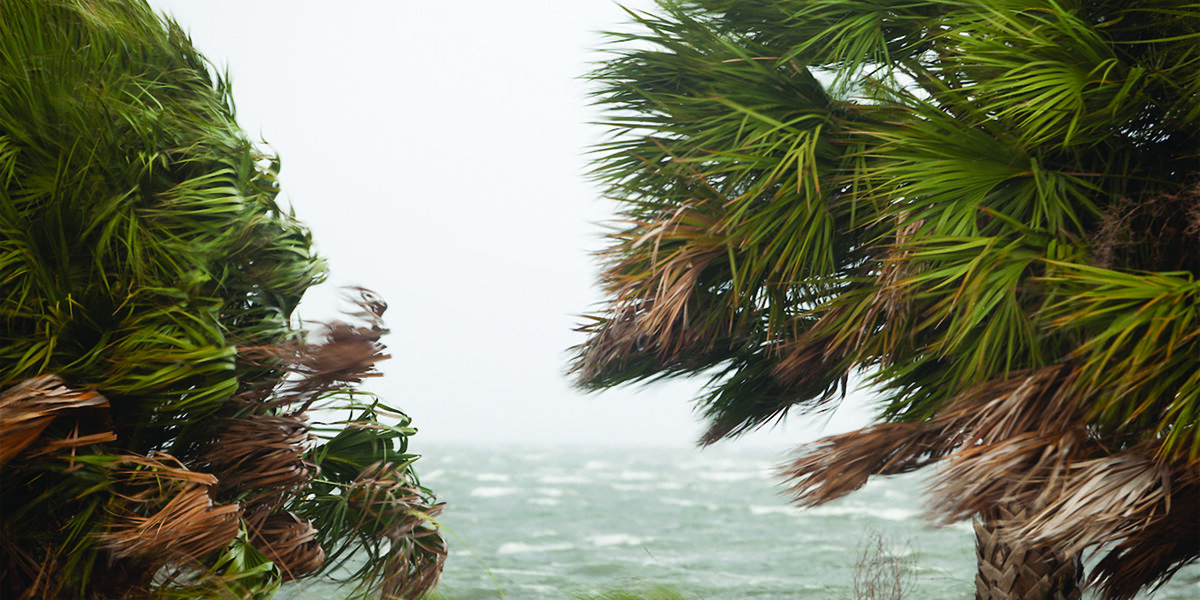By Lourdes Mederos
UF/IFAS
After a hurricane palm Owners may worry about the survival of their beloved palm trees.
With more than 2,600 species, the iconic palm tree seen in Florida’s landscapes is more resilient than you might think, even when the lush green fronds suddenly wither and thin due to extreme winds and rains during a storm.
Palm trees are important to consumers not only because they add an appealing aesthetic to the landscape, but also because they provide an additional source of food and serve as a habitat for wildlife, said Brian BahderAssociate Professor at UF/IFAS Fort Lauderdale Research and Education Center.
“They are ubiquitous in the tropics and if you can bring that tropical vibe here at home (in the United States), you can give people a little bit of tropical vibes without the high cost and stress of traveling abroad,” he said. “Some species are native and are important food and nesting sources for our native wildlife. Other palm species are important crops worldwide, with coconut and oil palm being the most important.
Some trendy health foods like acai also come from palm trees, making them a beautiful and sometimes nutritious addition to their landscape. A UF/IFAS Extension publication states: Hurricane-damaged palm trees in the landscape: care after the stormExperts from the UF Institute of Food and Agricultural Sciences provide detailed instructions on how to deal with broken and uprooted palm trees, including the need for proper water management during the recovery phase.
Bahder also answers questions from consumers about the height of hurricane season.
Q: How resilient are palm trees to a tropical storm or hurricane?
A healthy, established palm tree will survive a storm like Hurricane Debby without serious problems. Depending on the palm tree, the leaves may be shredded or kinked at the petiole, but will not suffer enough damage to require replanting. Palm trees have hundreds of fibrous roots that anchor them well in the group, and the vascular tissues of palm tree trunks are randomly distributed throughout the trunk. They do not run perfectly straight up and down, but rather “snake” through the trunk, giving the palm trunk great flexibility and greater resistance to breaking compared to typical trees such as oaks.
Q: What are the signs that your palm tree has survived or not? What should homeowners look for?
In this case, unless the palm tree falls off, it should be fine if it returns to the way it did before the storm. It is possible that fungal pathogens can get into the palm combined with excessive rainfall, but that will probably take a while to show. In extreme cases – say the palm tree is completely destroyed – if you see the spear leaf growing the following month, the palm tree is fine; it just needs time to recover.
Q: If you have to remove the palm tree, is it possible to replant parts of it?
No, you have to replant.
Q: What does science tell us about the recovery time of palm trees after a storm?
The most important point to remember is that it takes at least six months (and probably longer) for a palm tree to recover. This depends greatly on the type of palm tree and the extent of the damage. Palm trees that are naturally slow-growing can recover quickly if needed. Some types of palm trees can fully recover in six months, while others may take years. Regardless, palm trees grow more slowly than regular trees and have only one growing point—that is, palm trees with a single trunk—so it takes longer to tell if they are recovering compared to other plants. Patience is key with palm trees.
To learn more about palm tree species, palm tree care and more, check out these other AskIFAS extension documents.





